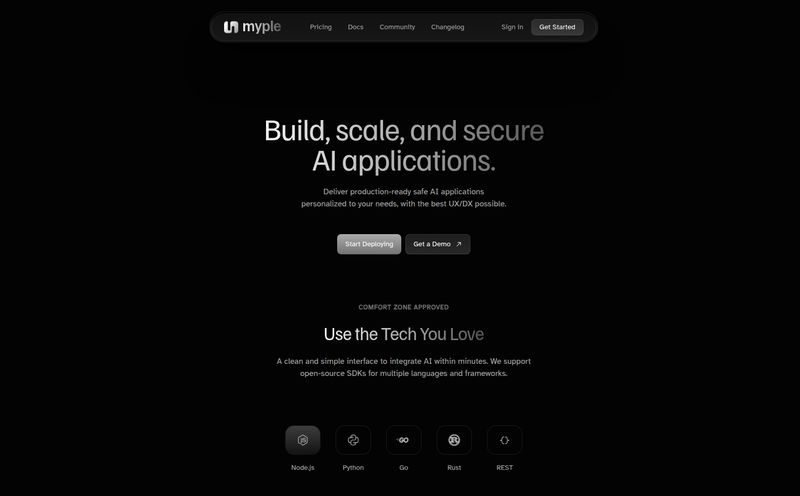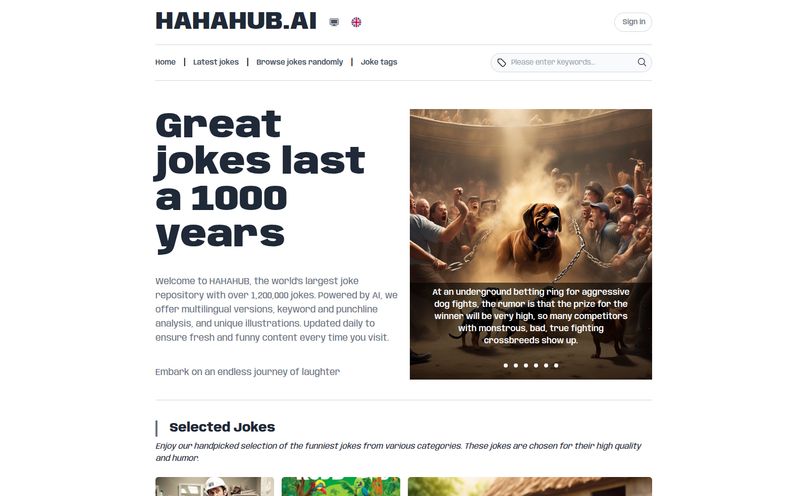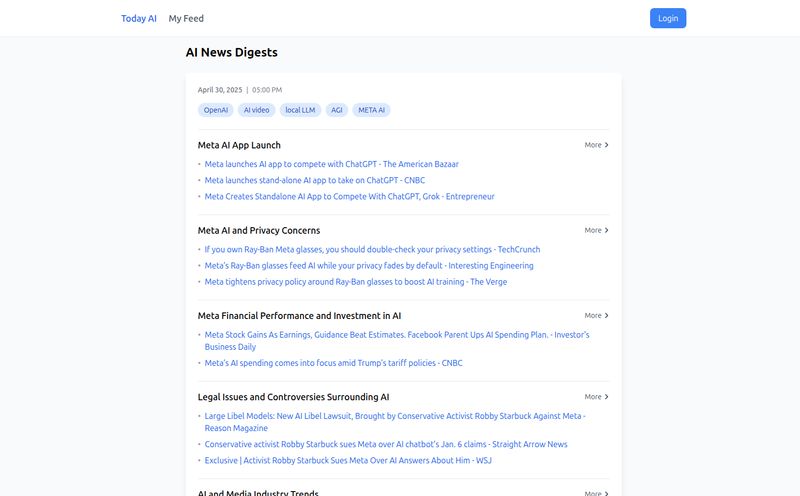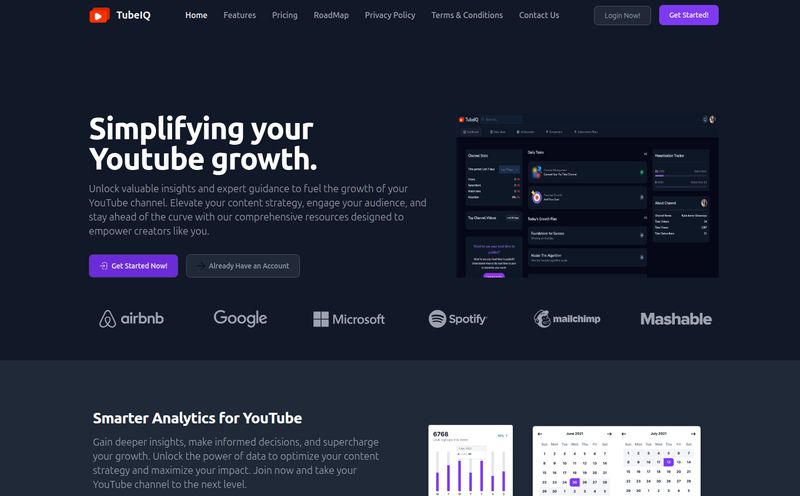I’ve been in the SEO and traffic game for years, and I’ve seen trends come and go. But one thing that's always been a pain point for businesses with vehicles on the road is telematics. Remember those clunky, expensive black boxes? The ones that required a specialist installer, a fat monthly subscription, and often gave you data that was, well, a little hard to decipher. It was a necessary evil for managing risk, but man, it felt like a ball and chain.
So, when I hear about a company claiming to do it all with just a smartphone, my ears perk up. Call me a skeptical optimist. The company is Artificient Mobility Intelligence, and their platform is called GIZO. They’re talking about AI-powered video telematics, driver profiling, and even sustainability tracking, all running off a device your drivers already have in their pockets. It sounds almost too good to be true, doesn't it?
Is this the breakthrough that finally democratizes fleet safety, or is it just clever marketing? Let's get into it.
So, What Exactly is GIZO?
At its heart, GIZO is a software solution that turns a mobile device into a sophisticated video telematics system. Forget the hardware headaches. Using computer vision—which is a fancy way of saying AI that can understand video—it analyzes footage from a phone's camera to monitor driving events. Think of it as a smart co-pilot that’s always paying attention.
Artificient says it's an all-in-one platform for safety and sustainability. This isn't just about catching a driver running a red light. It's about building a complete picture of your mobility operations. The goal is to transform all that raw data from vehicles on the road into insights you can actually use to make journeys safer, cut down on accident costs, and even shrink your company’s carbon footprint. A pretty tall order for an app.

Visit Artificient Mobility Intelligence
Breaking Down The GIZO Technology
Okay, so it sounds cool. But how does it work? The magic, it seems, is in the software and its flexibility. This isn't a one-trick pony.
Computer Vision on Your Smartphone
The core of GIZO is its ability to use a phone’s camera. This is a game-changer. For decades, telematics meant dedicated hardware. GIZO’s approach dramatically lowers the barrier to entry. But I was curious—what if you already have dash cams? Or OBD (On-Board Diagnostics) devices? Turns out, they thought of that. GIZO can pull data from multiple sources, including smartphones, dash cams, and OBDs, creating a much richer data set. This flexibility is a huge plus in my book, because fleets are rarely uniform. You might have new trucks with built-in tech and older vans that have nothing. A system that can bridge that gap is incredibly valuable.
More Than Just a Watchful Eye
Video is just the start. The platform's AI gets to work analyzing everything to provide some seriously useful features. It offers AI-driven risk assessment, which means it’s not just flagging events but predicting potential risks based on patterns. It also builds detailed driver profiles. This is huge for training. Instead of a generic “be a safer driver” talk, a manager can sit down with a driver and say, “Look, the data shows you tend to follow too closely on highways after 3 PM. Let’s work on that.” That’s a conversation that actually leads to change.
And then there's the accident handling automation. Anyone who's managed a fleet knows the chaos that follows a fender bender. The paperwork, the insurance calls, the he-said-she-said arguments. GIZO aims to streamline this by automatically capturing data and video around an incident, providing a clear, unbiased record. That alone could save thousands in operational headaches and insurance disputes.
The Green Angle: Sustainable Mobility
Here’s something you don’t see in every telematics package. GIZO includes features for sustainable mobility, specifically helping to reduce carbon emissions. It does this by analyzing driving styles—things like harsh acceleration, unnecessary idling, and inefficient routing. By coaching drivers toward smoother, more efficient habits, companies can cut fuel consumption. For a large fleet, that’s not just good for the planet; its fantastic for the bottom line. With more and more companies being held accountable for their ESG (Environmental, Social, and Governance) goals, this feature feels less like a bonus and more like a necessity.
The Good, The Bad, and The Beta
No platform is perfect, right? Every tool has its strengths and its... let's call them 'areas for growth'. After looking through what Artificient is offering, here's my take.
The upsides are pretty compelling. The fact that it's a low-cost, software-first solution is the biggest headline. It makes advanced safety tech accessible to smaller businesses that couldn’t afford traditional systems. The company also boasts about its cutting-edge accuracy in risk assessment, which is the whole point. And they’ve considered the practicalities: the app is designed to be battery efficient, which is a critical detail when you're asking drivers to run it on their personal or work phones all day. Plus, they state they are GDPR compliant, a must-have for operating in Europe and a gold standard for data privacy everywhere.
| The Good Stuff | The Not-So-Good Stuff |
|---|---|
| Low-cost software solution | Driving Assistance is in BETA |
| High accuracy AI risk assessment | Relies on smartphone data quality |
| Battery efficient on mobiles | Requires strong user adoption |
| GDPR compliant by design | |
| Flexible data sources |
Now for the other side of the coin. The biggest flag for me is that the Driving Assistance feature is currently in BETA. This isn't necessarily a bad thing—it shows they're innovating—but it means you should manage your expectations. Beta features can be buggy and aren't fully baked. It's one thing to test new software in an office, it's another thing entirely when it's on the road.
The other consideration is the reliance on smartphone data. What happens in a rural area with spotty cell service? Or if a driver’s phone mount is shaky, affecting the video quality? While the system is smart, its output is only as good as the input it receives. And finally, there's user adoption. You need your drivers to buy in, to use the app correctly and consistently. That can be a cultural challenge for some organizations, especially with veteran drivers who might be resistant to new tech monitoring them.
So, How Much Does GIZO Cost?
This is the million-dollar question, isn't it? As a business owner or fleet manager, you want to know the bottom line. So, naturally, I went looking for a pricing page on their website. And you know what I found?
A 404 error. Page not found.
I have to admit, I chuckled. Here's this cutting-edge AI mobility company, and I hit a digital pothole. It's a humbling reminder that even the most tech-forward companies are run by humans. It also means I can't give you a neat little pricing table. From what I can gather, Artificient operates on a quote-based model. You have to get in touch with them to discuss your fleet's specific needs. This makes sense for an enterprise solution, as pricing likely depends on fleet size, features needed, and data sources used. So, if you're interested, you’ll have to reach out to them directly.
Who Is This Really For?
I see a few key groups getting a lot of value out of GIZO.
- Small to Medium-Sized Fleets: The low barrier to entry is perfect for businesses that have 5, 20, or 50 vehicles and want to professionalize their safety program without a massive capital investment.
- Insurance Companies: The data GIZO provides on risk is a goldmine for insurers looking to create more accurate usage-based insurance (UBI) models. They could partner with Artificient to offer discounts to safer fleets.
- Last-Mile Delivery & Gig Economy Platforms: Think of companies that rely on independent contractors using their own vehicles. A software-based solution like GIZO is far easier to deploy across a distributed, non-uniform fleet than traditional hardware.
- Companies with Strong ESG Goals: Any company serious about reducing its carbon footprint will find the sustainability insights incredibly powerful for both making and reporting on progress.
Frequently Asked Questions
- What is GIZO by Artificient Mobility Intelligence?
- GIZO is a software platform that uses AI and computer vision on mobile devices to provide video telematics, driver risk assessment, and sustainability insights for vehicle fleets.
- How does GIZO work without special hardware?
- It primarily uses the camera and sensors in a regular smartphone to capture and analyze driving data. However, it can also integrate with existing hardware like dash cams and OBD-II devices for more comprehensive data collection.
- Is GIZO compliant with data privacy regulations?
- Yes, the company states that the platform is designed to be GDPR compliant, which is a very high standard for data protection and privacy.
- What kind of data does GIZO collect?
- It collects video of driving events, vehicle dynamics from phone sensors (like acceleration and braking), and location data to analyze driver behavior, assess risk, and measure fuel efficiency.
- Is the driving assistance feature ready for full use?
- No, the driving assistance feature is currently in BETA testing. This means it's still under development and may not be fully stable or feature-complete. Customers should consider this when evaluating the platform.
- How does GIZO help reduce a fleet's carbon footprint?
- By analyzing driving habits like harsh acceleration, speeding, and idling time, GIZO provides coaching insights to encourage a more fuel-efficient driving style, which directly reduces carbon emissions.
My Final Thoughts on GIZO
So, where do I land on Artificient's GIZO? I'm genuinely intrigued. The move from expensive, clunky hardware to intelligent, flexible software feels like the natural and necessary next step for the telematics industry. The focus on both safety and sustainability is smart, aligning with the real-world pressures businesses face today.
It's not a magic wand. The challenges of user adoption and reliance on smartphone data quality are real. And the fact that a key feature is still in beta means it's a platform that's still growing. But the potential here is enormous.
For a fleet manager tired of the old way of doing things, or for a smaller business that thought advanced telematics was out of reach, GIZO represents a very interesting opportunity. It’s a sign that the future of road safety might just be sitting in your pocket.
Reference and Sources
- Artificient Mobility Intelligence Official Website
- General Data Protection Regulation (GDPR) Information



